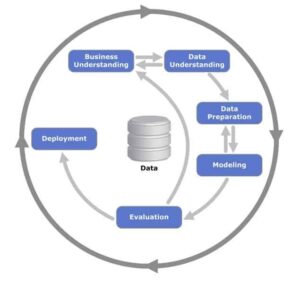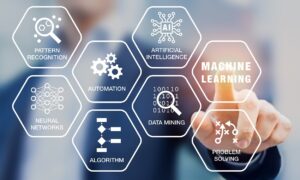Natural Language Processing is one of the machine learning techniques used in connection with unstructured text and audio data.
Natural Language Processing and its application
Natural language processing enables the machine to understand text and audio data like a human and to respond in text or voice form.
What is natural language processing?
Natural language processing is a branch of computer science and more specifically a branch of artificial intelligence that deals with giving computers the ability to understand text and spoken words in the same way that humans do. to do Natural language processing combines computational linguistics – modeling based on the rules of human language – with statistical models, machine learning and deep learning. Together, these technologies enable computers to process human language as text or audio data and “understand” its full meaning, fully aligned with the intent and emotion of the speaker or writer.
Natural Language Processing has led to the creation of computer programs that translate text from one language to another, respond to audio data, and quickly summarize large amounts of text. In the field of natural language processing
(Natural Language Processing) Interaction can exist in various forms such as GPS systems, digital assistants, speech-to-text software, customer service chatbots, etc. In addition to the cases mentioned, natural language processing plays an increasing role in organizational solutions that help simplify business operations, increase employee productivity, and simplify critical business processes.
natural language processing tasks
Human language is so full of ambiguities that it is very difficult to write software that accurately determines the meaning of text or audio data. Synonymous words, similar words, idioms, irony, metaphors, grammar and usage of exceptions, and diversity in the structure of sentences are only part of the irregularity of natural languages, it is difficult and time-consuming to learn, but programmers They train natural language processing models to handle these tasks with high accuracy.
The tasks of natural language processing (Natural Language Processing) are to analyze text and audio data in a way that helps the machine to gain an understanding of the data it is given. Some of these are as follows:
1- Speech recognition, which is also called speech to text conversion, is the reliable conversion of audio data into text data. Speech recognition is necessary for any application that works with voice commands, or answers spoken questions. One of the major challenges in this field is how to speak (tone, accent, incorrect grammar, incorrect pronunciation).
2- Labeling of speech components: It is also called as affixing grammar or grammar, the process of determining the role of speech components, such as the role of words in a sentence. such as nouns, verbs, adjectives, etc.
3- Disambiguation of the meaning of words: It means choosing the meaning of a word with multiple meanings according to the context in which the word is used. Like the word milk in different contents.
4- Identification of named entities: Identify words that are proper nouns. مانند اسامی اشخاص، شهرها و اماکن دیدنی….
5- Identification of referring words: Do words refer to an entity? In fact, recognizing the pronouns that entities have pointed to. In addition to this, the recognition of terms and allusions is also possible.
6- Analysis of feelings: An attempt to extract a variety of positive and negative emotions from the text
7- Natural language production: It is actually putting structured information into human language form.
Types of approaches to natural language processing
Statistical natural language processing, machine learning and deep learning.
The first natural language processing programs were rule-based and hand-coded systems that could perform specific processing tasks. But this set of rules was closed and it was not possible to generalize to words with special meanings and exceptions. Later, statistical models were used to create inputs for use in machine learning and deep learning models. Today, deep learning models and learning techniques based on convolutional neural networks (CNNs) and recurrent neural networks (RNNs) enable natural language processing systems to “learn” on the fly and Extract more precise meaning from large volumes of raw, unstructured, and unlabeled text.
Some applications of natural language processing
Spam detection
Sentiment analysis of comments and social networks
Chatbots
Machine translation
Summarizing texts and subject classification








